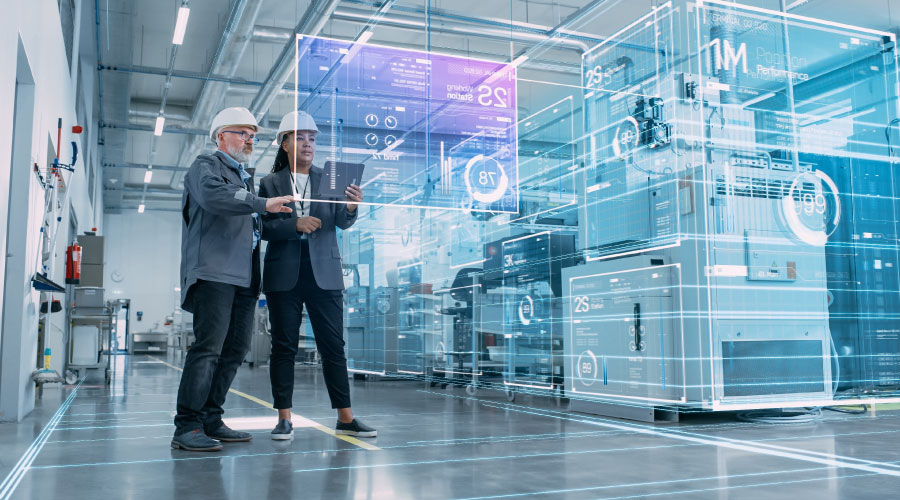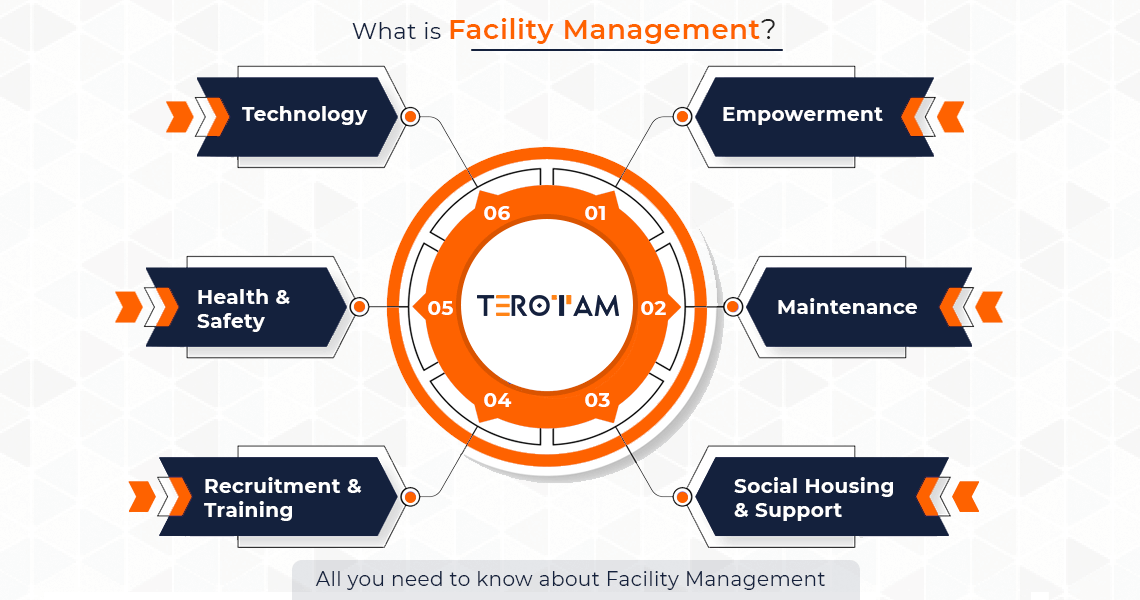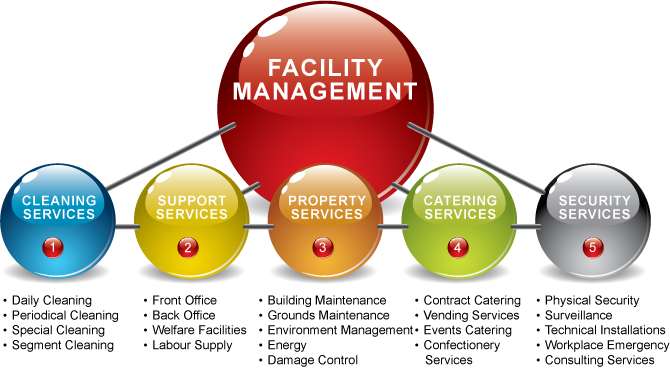Secret Fads Shaping the Future of Facility Monitoring in 2024
As we expect 2024, the landscape of center administration is positioned for significant makeover, driven by a number of essential fads. The integration of smart structure innovations and a shift towards data-driven decision-making promise to improve functional effectiveness while prioritizing sustainability in technique. In addition, the introduction of crossbreed job versions is reshaping workplace settings, requiring cutting-edge design services that cater to progressing employee needs. In the middle of these modifications, the emphasis on occupant wellness remains to gain traction, emphasizing the value of a healthy office. How these trends will certainly materialize in technique remains a critical question for sector professionals.
Smart Structure Technologies

Smart structure modern technologies incorporate a broad range of systems, consisting of intelligent lighting, HVAC controls, and safety systems. By integrating these systems, center supervisors can check and readjust parameters in real-time, causing considerable reductions in power waste and operational expenses. For instance, clever sensing units can spot tenancy degrees and change illumination and temperature appropriately, making certain that power is just utilized when needed.
Additionally, these modern technologies help with enhanced information collection, allowing organizations to track usage patterns and determine possibilities for more enhancements. The application of smart building innovations not only contributes to sustainability goals however likewise develops healthier workplace that can enhance staff member productivity and fulfillment.
As we relocate right into 2024, the fostering of smart building modern technologies will likely speed up, reflecting a more comprehensive shift towards even more smart, responsive, and lasting facility management practices.
Data-Driven Decision Making
Increasingly, organizations are leveraging data-driven choice making to boost facility management practices. By using information analytics, center managers can obtain actionable insights that dramatically improve functional efficiency and resource allocation. The assimilation of advanced modern technologies, such as IoT sensing units and real-time surveillance systems, enables the collection of substantial amounts of data on building efficiency, occupancy rates, and energy usage.
This wealth of details enables center supervisors to identify patterns, predict maintenance requirements, and proactively address concerns prior to they rise. Predictive analytics can forecast tools failures, lowering downtime and repair costs. In addition, information visualization devices assist in far better communication among stakeholders, making certain that informed decisions are made collaboratively.
Furthermore, data-driven methods boost critical planning by allowing center managers to assess the efficiency of present methods and make notified options regarding investments in modern technology or framework. As organizations significantly focus on operational excellence, data-driven choice production is positioned to end up being a keystone of effective facility monitoring approaches in 2024 and beyond. Ultimately, the ability to utilize data properly will encourage companies to develop a lot more effective, productive, and durable facilities.
Sustainability and Green Practices
The emphasis on data-driven choice making normally straightens with the growing concentrate on sustainability and green techniques within center administration. As organizations significantly prioritize environmental duty, facility managers are leveraging analytics to enhance resource use, lower waste, and reduce carbon footprints. This strategic approach makes it possible for the integration of energy-efficient systems, such as LED illumination, clever browse around this site HVAC controls, and eco-friendly energy sources into center procedures.
In addition, the implementation of sustainable techniques prolongs past energy intake. Facility managers are taking on green products and advertising reusing initiatives to produce a round economic climate within their facilities. This not just improves the environmental account of the organization but likewise promotes a culture of sustainability among staff members.
Conformity with ecological policies is another critical element driving the fostering of environment-friendly practices. By making use of information analytics, center supervisors can keep an eye on conformity metrics and identify areas for improvement, ensuring adherence to international and neighborhood sustainability requirements.
Hybrid Job Models
A considerable change in the direction of crossbreed work designs is improving the landscape of center administration in 2024. This paradigm integrates in-office and remote work, necessitating a reevaluation of room use, resource allocation, and staff member involvement strategies. Organizations are significantly acknowledging the value of flexible work spaces that accommodate varied requirements and preferences.
Center managers must adapt by implementing versatile office styles that sustain collective initiatives while offering locations for focused work. This consists of the assimilation of modern technology to facilitate smooth communication and collaboration amongst remote and in-office workers. Smart building solutions, equipped with analytics and sensing units, permit real-time surveillance of area usage, enabling organizations to optimize their atmospheres successfully.
Moreover, crossbreed work models highlight the need for effective center management that prioritizes staff member experience. This encompasses not just technology and space design however additionally the advancement of policies that promote a well balanced work-life dynamic. As companies navigate this transition, the function of center management ends up being crucial in developing an active workplace that fosters efficiency and drives organizational success. In essence, the hybrid work version is transforming facility administration, why not find out more encouraging a positive method to meet the advancing needs of the workforce.
Improved Owner Wellness
As companies embrace hybrid work models, an increased concentrate on occupant health is coming to be essential to facility management strategies. Facility Management. This shift acknowledges that a pleased and healthy and balanced workforce directly impacts productivity and retention rates. Facility managers are currently focusing on atmospheres that promote physical and mental health, incorporating elements such as all-natural lights, biophilic layout, and available wellness sources

Innovation plays an essential function in this development. Smart building systems can check environmental factors and adjust setups in real-time, guaranteeing optimal convenience degrees - Facility Management. Comments devices, such as occupancy sensing units and worker surveys, permit center managers to consistently fine-tune wellness campaigns based on occupant requirements.

Verdict
In 2024, the future of facility monitoring will certainly be dramatically influenced by the combination of smart structure innovations and data-driven decision-making, fostering boosted operational effectiveness. Sustainability initiatives will prioritize environment-friendly techniques, while the development of hybrid job models will necessitate versatile workplace designs. An increased emphasis on occupant wellness via innovative HVAC systems and biophilic design will certainly add to healthier work atmospheres. These fads collectively highlight the progressing landscape of facility monitoring in feedback to modern obstacles and opportunities.
Center managers are promoting and taking on environmentally friendly materials recycling initiatives to create a round economic situation within their facilities.A considerable change in the direction of crossbreed job models is improving the landscape of facility administration in 2024.Furthermore, crossbreed job models highlight the demand for efficient center administration that focuses on staff member experience.As organizations embrace hybrid work versions, an increased focus on resident wellness is coming to be indispensable to facility management approaches.In 2024, the future of facility monitoring will certainly be dramatically influenced by the assimilation of clever building innovations and data-driven decision-making, cultivating enhanced functional effectiveness.